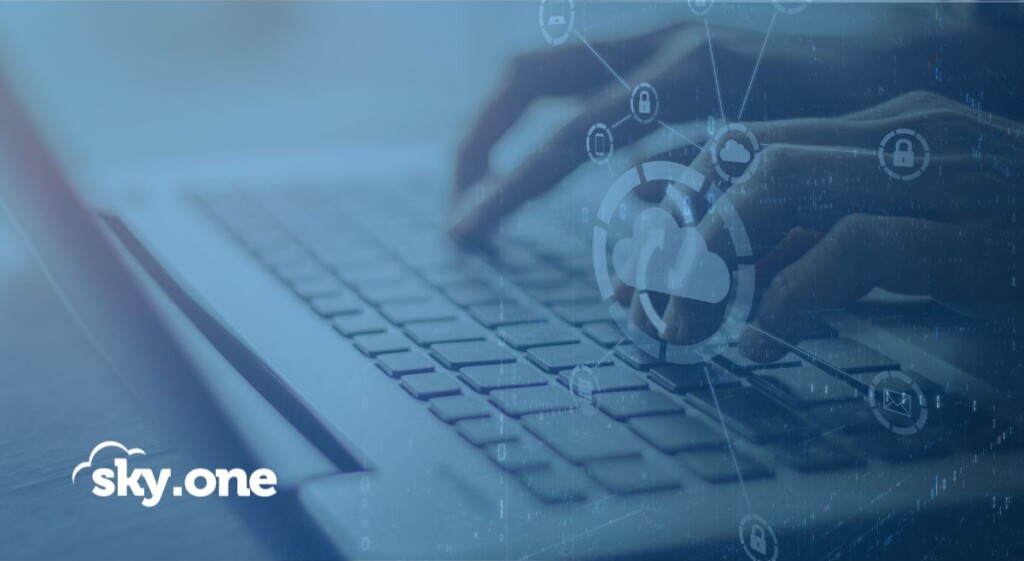In a world where cybersecurity is no longer a matter of choice for companies, identifying and fixing vulnerabilities in systems and networks is essential to protecting confidential data and ensuring the integrity of operations.
In this sense, one of the most used tools is Pentest – an important practice where experts simulate attacks on information systems to identify vulnerabilities. The goal is to find and fix flaws before malicious individuals can exploit them.
However, after the Pentest has been carried out, the vital need for remediation arises. Correcting detected flaws is a fundamental step to protect company assets against potential attacks.
Therefore, vulnerability remediation must be carried out strategically, with a methodical approach that prioritizes threats with the greatest potential for impact and works to reduce risks effectively.
That's why, in this article, we'll explore best practices and strategies for dealing with vulnerabilities revealed during a Pentest . From understanding results to effectively implementing fixes, you'll discover how to prioritize vulnerabilities, effectively communicate issues to stakeholders, and implement solutions to strengthen your organization's security posture.
Good reading!
Why should companies use Pentest?
Every business wants to keep its operations safe from potential cyber threats. And no wonder: according to the report “Cyber security trends 2023: The latest threats and risk mitigation best practice – before, during and after a hack” , the number of cases in which data leaks occur is increasing every year: it has doubled from 40% in 2019 to almost 80% in 2022, with a significantly higher 2023.
Thus, Pentest (or penetration testing) comes as a valuable tool to guarantee this security. This is because it enables organizations to anticipate the ability of attackers to exploit vulnerabilities in their systems.
Pentest offers the simulation of cyber attacks in a controlled environment, enabling companies to understand their weaknesses before digital criminals do. Qualified information security professionals conduct the Pentest with the aim of identifying and testing the systems' ability to respond to different types of intrusions.
The result? Companies gain in-depth knowledge about the strength of their security barriers and a clear understanding of how they can strengthen their protection mechanisms.
After testing, concrete actions are then recommended to remediate weaknesses, increasing the organization's resilience.
By implementing these improvements, companies significantly increase their ability to prevent and react to incidents that could compromise their data and business continuity.
And it is exactly this stage that we are going to talk about!
Understanding Pentest results
After carrying out a Pentest , it is essential to understand each aspect of the results, as they are what will guide the strategies to reinforce the system's security. Therefore, analyzing the information in the report in detail and categorizing it correctly allows the security team to make more assertive decisions.
Interpretation of reports
Pentest reports provide a comprehensive view of the security status of tested applications. Therefore, it is essential that professionals in the field correctly interpret the data to understand the threat landscape.
Well-structured reports provide a roadmap for vulnerability assessment, as well as recommendations for mitigating the risks found. reporting stage is not just about listing issues, but providing a clear context for them , allowing security management to develop an effective response.
Vulnerability categorization
Vulnerabilities identified during a Pentest are generally categorized of the crucial points in the analysis process. These categories can range from critical, which require immediate attention, to casualties, which pose less significant risks to the system.
Specialized tools can also be used at this stage, where the penetration tester performs recognition, scanning and detailed analysis of the applications in question.
See below some of the most common vulnerability categorizations:
Gravity
| Review | Vulnerabilities that could allow remote code execution, system access serious data breaches. |
| High | Vulnerabilities that can lead to significant system compromise , but with additional restrictions compared to critical ones. |
| Average | Vulnerabilities that can affect security but are less likely to be exploited or have a less severe impact. |
| Low | Vulnerabilities that have a minimal security impact and are considered unlikely to be exploited. |
Ease of exploration
| Trivial | Vulnerabilities that can be easily exploited , often with automated tools or without the need for specialized knowledge. |
| Moderate | Vulnerabilities that require some degree of technical knowledge or specific conditions to be exploited. |
| Difficult | Vulnerabilities that are difficult to exploit and may require an attacker with advanced skills, privileged access, or a combination of conditions. |
Impact
| Confidentiality | Vulnerabilities that could lead to the sensitive or unauthorized data |
| Integrity | Vulnerabilities that allow data or systems to be changed without permission. |
| Availability | Vulnerabilities that could result in a denial of service or affect the availability of a resource or system. |
| Responsibility | Vulnerabilities that affect the ability to track and audit actions on a system. |
Location
| Network | Related to network services and protocols, such as web servers, email, authentication, etc. |
| Application | Found in web, desktop or mobile applications, such as injection faults, business logic faults, etc. |
| Operational system | Related to misconfigurations , patch failures, or other operating system-level issues. |
| Physical | Related to physical security , such as inadequate access to data centers or hardware. |
Type
| Techniques | These include software glitches , misconfigurations, and design issues. |
| Humanities | Social engineering, phishing, and other techniques that exploit human error . |
| Organizational | Inadequate security policies , lack of training or poor security processes. |
CVSS
A tool that is commonly used in cybersecurity is CVSS , or “Common Vulnerability Scoring System”. This is because it is an open and free standard for evaluating the severity of security vulnerabilities in information systems.
CVSS provides a way to capture the key characteristics of a vulnerability and produce a numerical score that reflects its severity. The score can then be used to help organizations prioritize the response and remediation of different security vulnerabilities.
Thus, the CVSS scoring system is based on several metrics that measure aspects such as the ease of exploiting the vulnerability, the impact of a successful exploitation, and whether there are any specific mitigations or conditions required to exploit the vulnerability.
Prioritizing vulnerability remediation
Prioritizing the remediation of Pentest vulnerabilities is a fundamental process to reinforce the security of information systems, determining which ones must be corrected immediately to mitigate relevant risks.
Check out how to do this:
What is most important to remedy first?
There's no mystery: critical vulnerabilities must be treated as a top priority. This is because these are flaws that offer a direct path for attackers to significantly compromise systems, affecting the confidentiality, integrity or availability of data.
Therefore, identifying them is essential, considering elements such as exploration potential and impact on the business. Once identified, immediate remediation of these vulnerabilities is vital to maintaining a secure environment.
The value that the information has for the company, as well as its relevance to compliance , should also influence remediation planning. Vulnerabilities that threaten critical data or put the organization at legal risk demand priority attention .
Prioritization tools and methodologies
To perform efficient prioritization, there are tools and methodologies that assist in this process. Using a risk matrix , for example, allows you to organize the identified failures based on their severity and impact on the company.
The scope of each vulnerability found in Pentest must be evaluated, considering the probability of occurrence and ease of remediation. triage format to determine the order of correction, such as classifying vulnerabilities with critical, high, medium and low risk labels, as we saw previously.
Vulnerability management tools also automate part of this process and help maintain an inventory of flaws, their respective priority, and continuously monitor the organization's security posture.
Vulnerability remediation strategies
Before we talk about ways to deal with vulnerabilities discovered during Pentest, it is essential to understand remediation strategies and the benefits of having a action plan during this process.
Correction vs. mitigation
Do you know the difference between correcting and mitigating ?
Remediation refers to the process of completely fixing a vulnerability, eliminating it from the system. This usually involves updating software , applying patches , or modifying system configurations.
Mitigation, on the other hand, means reducing the impact or probability of exploitation of a vulnerability found. Some mitigation methods include:
- Implementation of stricter access controls;
- Addition of multi-factor authentication;
- Restrict user privileges to the minimum necessary.
Mitigation is often temporary and often adopted when an immediate fix is not currently available.
Why develop an action plan?
Developing an action plan is an essential step in remediating Pentest vulnerabilities. The plan must be clear and detailed, including:
- A timeline for correction or mitigation;
- Metrics to measure remediation progress;
- Defined communication channels to report progress and challenges.
A well-structured action plan ensures that vulnerabilities are addressed efficiently, minimizing the risks of attacks and exploitations. It also lays a foundation for long-term security strategies by keeping all parties informed and involved.
Implementing security fixes
After identifying and categorizing the vulnerabilities found in Pentest , it is essential that companies' IT security teams apply the fixes effectively and methodically, protecting web and cloud infrastructures against attacks.
Let’s look at the best practices below:
Best practices for patching
patching must follow a strict protocol to ensure that not only are flaws fixed, but that new vulnerabilities are not introduced into the process .
Initially, it is essential to establish a regular update calendar , ensuring the continuous updating of security solutions. Therefore, companies must invest in training their teams, ensuring that they have the knowledge and skills necessary to correctly implement patches .
patches must be applied immediately after being released by developers, while others can be scheduled according to their criticality. patch management tools to identify, test, and apply security updates across your entire IT infrastructure.
Testing the effectiveness of fixes
Once the remediations are done, it is important to check whether the vulnerabilities have been properly remedied. new round of Pentest comes into play , which must be done to confirm the effectiveness of the corrections.
Continuous security testing after patching is an integral part of the security lifecycle of a cloud application or infrastructure. That's because, as we've seen, they generate detailed reports that allow IT professionals to adjust and refine security strategies as needed, strengthening the organization's security posture against future attacks.
Communication and documentation of remediations
Within the scope of Pentest, clear and effective communication is vital throughout the process of remediating identified vulnerabilities. The results found must be reported in detail , always taking into account discretion and professionalism, to avoid unnecessary exposure of sensitive data.
Documentation is another key piece in the remediation phase. It must include:
- Description of vulnerabilities: technical details of the point of failure;
- Potential impact: what could happen if the vulnerability was exploited;
- Remediation recommendations: measures to correct or mitigate risks;
- Deadlines and responsible parties: who will take action and what deadlines are established.
This documentation serves as an official record that can be reviewed and audited as necessary, and as a guide for implementing better, more effective security practices.
The Pentest remediation stage is the actual action of correcting vulnerabilities. Therefore, each action must be well documented, including the remediation strategy adopted and verification of the effectiveness of the applied corrections, ensuring that security flaws have been properly addressed and that the same point of failure will not be exposed again.
Count on Skyone for an effective and safe Pentest
The effectiveness of a Pentest depends heavily on the expertise of the professionals involved and the tools used during the process. Skyone stands out for offering a deep and complete approach to cybersecurity challenges, combining market experience with a suite of advanced tools .
proactively check whether there are loopholes to access your confidential information, the possibility of denial of services, data hijacking for the purpose of ransom demands and much more.
Find out more about our platform!
Conclusion
The reality is that sensitive data, when exposed, can result in irreparable harm to companies. Therefore, the inclusion of Pentest within the software and periodic maintenance of security analyzes are essential proactive measures for incident prevention .
Regularly implementing penetration testing is a strategy that significantly contributes to an organization's resilience in the face of constantly evolving digital threats. It is essential to ensure that security practices are efficient and up to date, reflecting the commitment to protecting vital assets.
Take advantage of our knowledge trail and learn everything about Pentest in a special guide!





